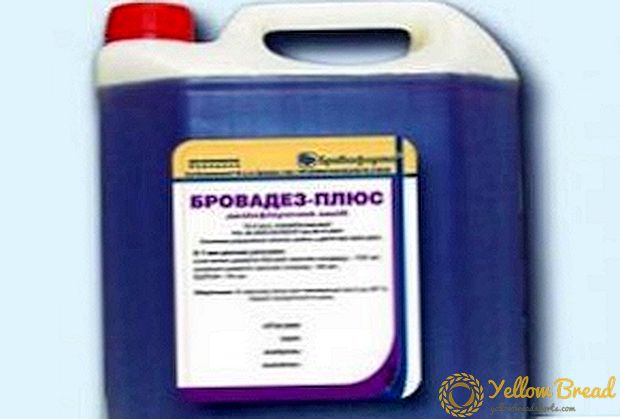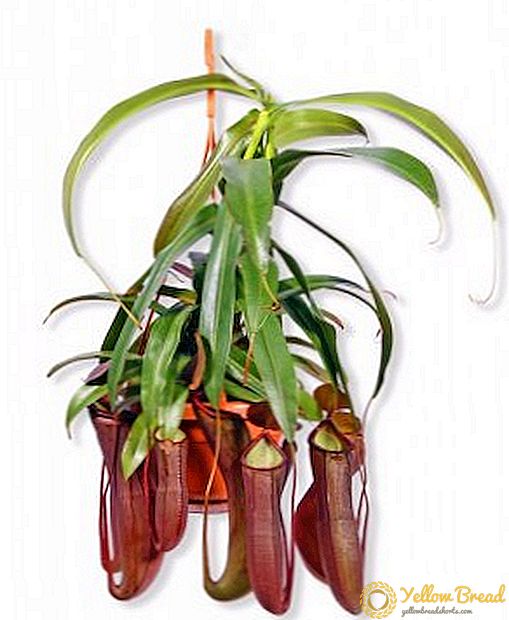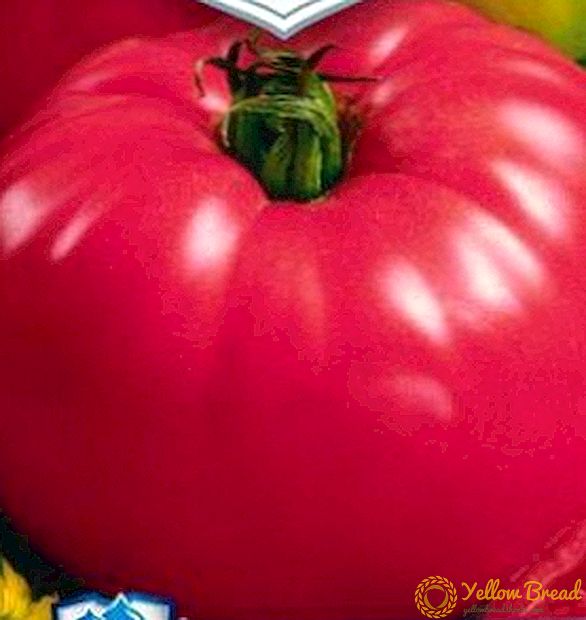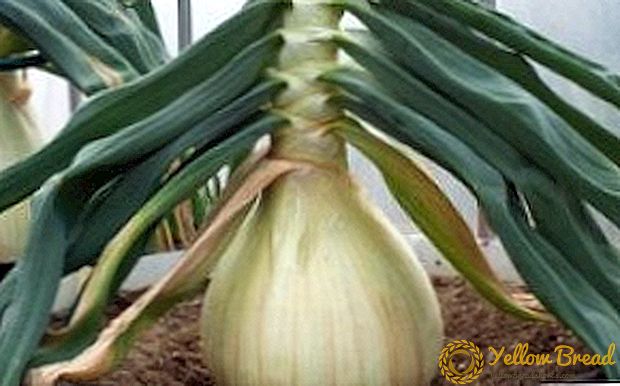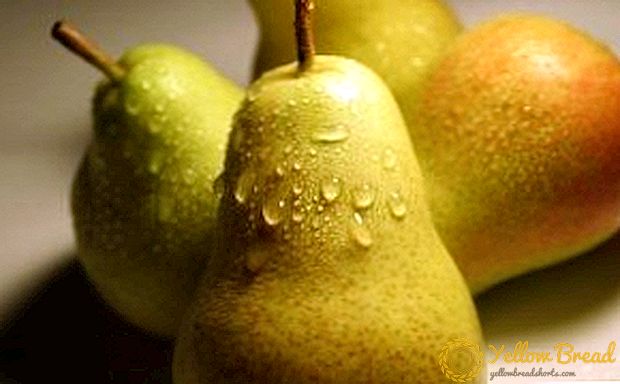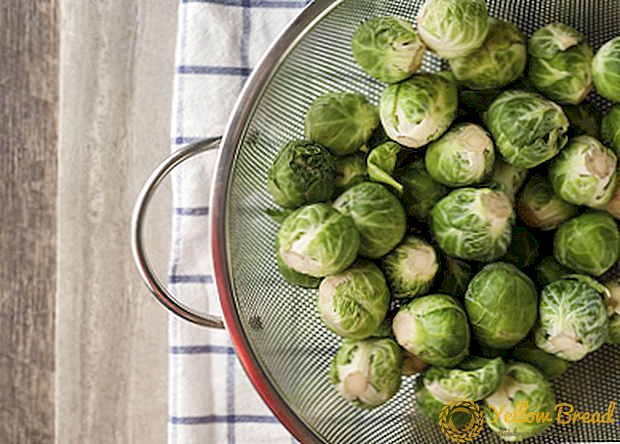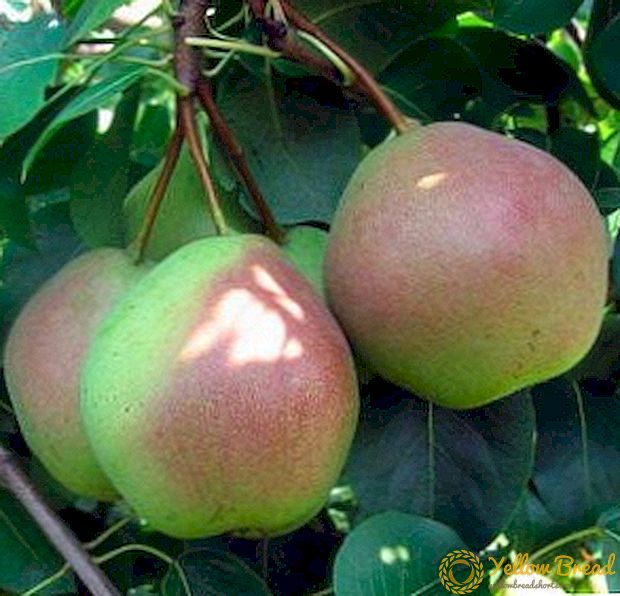 Pear is one of the most frequent fruits on the market. Today we offer a fairly wide range of varieties that can satisfy even the most pretentious taste. Variety "Rossoshanskaya dessert" - one of the most interesting and remarkable both in appearance and in characteristics. What is the difference between these fruits? First things first.
Pear is one of the most frequent fruits on the market. Today we offer a fairly wide range of varieties that can satisfy even the most pretentious taste. Variety "Rossoshanskaya dessert" - one of the most interesting and remarkable both in appearance and in characteristics. What is the difference between these fruits? First things first.
- Breeding history
- Tree description
- Fruit Description
- Lighting Requirements
- Soil requirements
- Pollination
- Fruiting
- Flowering period
- Gestation period
- Yield
- Transportability and storage
- Resistance to environmental conditions and diseases
- Drought tolerance
- Winter hardiness
- Use of fruits
- Advantages and disadvantages
- pros
- Minuses
Breeding history
The variety was bred in 1952 at the Rossoshansky Experimental Station of Gardeners, from there it got its name. In the creation of the participating varieties "Winter Beech Michurin" and "Forest Beauty".  In 1968, the trees were transferred to the State tests, after which they became more widely distributed in the North Caucasus, the Central part and the Southern Black Soil Region.
In 1968, the trees were transferred to the State tests, after which they became more widely distributed in the North Caucasus, the Central part and the Southern Black Soil Region.
The most widely spread variety was in the years 1975-1995 in the southern territories of the Central Black Soil Region.
Tree description
Trees usually grow medium to tall.They have a rare and wide crown, which is associated with a weak ability to form new shoots. An important point in the content is regular pruning.
 The leaves on the tree are oval, medium in size, with tips slightly twisted upwards. The sheet plate is smooth, of a beautiful green color, usually bent downwards along the middle vein.
The leaves on the tree are oval, medium in size, with tips slightly twisted upwards. The sheet plate is smooth, of a beautiful green color, usually bent downwards along the middle vein.Fruit Description
A distinctive feature of the variety are its fruits. Usually they are medium and slightly larger.The weight of an average pear is 140-170 g, but does not exceed 210 g. They are rounded, more similar to apples in appearance.
Although the taste of a pear is sweet, the texture of the flesh is uniform and soft, and the aroma is saturated, the taste is estimated at 4.6 out of 5 points.
The fruits have a yellow-green color, very often with a beautiful pink blush. The skin is thin, but dense. The flesh is most often white, sometimes a beige tint is also found. Pears themselves are very tender and soft, the pulp is uniform in taste and without impregnations of grain, sweet and juicy. 
Lighting Requirements
The tree most of all loves scattered sunlight in sufficient quantity. This is a heat-loving and sun-loving plant that does not tolerate drafts and gusty winds.
Pear varieties "Rossoshanskaya Dessert" will be good fruit in places that describe the following criteria:
- availability of sunlight;
- a small number of neighbors;
- There are no large shaded areas from the houses.
Soil requirements
"Rossoshanskaya dessert" refers to undemanding in the care and maintenance of varieties, so there are no special wishes for the soil.

Pollination
Variety is among the samobzlodnyh, so it needs compulsory pollination. Pear trees of the Marble, Tatiana, Autumn Yakovleva varieties will be suitable trees. You can use other types, as long as flowering occurs at the same time.
Fruiting
Pear is skoroplodnoy. Already in the 5-6th year of life, it is possible to carry out the first pollination and expect to receive a harvest. Fruiting is characterized by regularity and good, stable performance.
Flowering period
Flowers of the same small size, cupped and slightly terry. Usually white, appear as umbrellas in small inflorescences. Their petals are usually closed. Flowering occurs approximately on average time, guided by the general timing of flowering.
Gestation period
The plant belongs to the early varieties.In conditions of warm southern weather the fruits ripen by mid-September. It is recommended to pick off slightly unripe fruits, which then lie down and acquire a beautiful yellow hue. 
Yield
The harvest, which can be obtained from a single tree, has a high and stable performance. With pears pluck about 70 kg of fruit in one season. If we talk about industrial scale, then in the garden you can get from 130 to 320 kg per year.
Transportability and storage
The consumer period is 78 days, until November, which is a typical feature for autumn varieties. Even after transportation, pears have high consumer qualities.
Resistance to environmental conditions and diseases
In general, the variety is rather unassuming, but still does not tolerate drafts and sudden gusts of wind.
 High immunity is good against both most diseases and pests that it fights with its own resources. High resistance to scab and septoria.
High immunity is good against both most diseases and pests that it fights with its own resources. High resistance to scab and septoria.Drought tolerance
Since this species does not like significant moisture, the trees tolerate droughts well. But if young trees that were recently planted are in hot and dry weather, watering should be carried out in sufficient quantity.
Winter hardiness
Usually the winter hardiness of plants is very high. But in the northern parts of the country, it is dropping to averages. This is explained by the fact that the variety belongs to heat-loving and light-loving. It can be strengthened by grafting even more resistant varieties into the crowns of trees.
Use of fruits
Since pear is dessert, its fruits have good taste and can be used raw.  In the peel there is a lot of useful fiber and essential trace elements.
In the peel there is a lot of useful fiber and essential trace elements.
Advantages and disadvantages
Like any other variety, pear has its own special advantages and disadvantages. But it is important that the advantages of this variety are much greater.
pros
- The period of fruiting comes very quickly - in the 5th year.
- High yields.
- High frost resistance and resistance to diseases and pests.
- Good transportability and performance keeping quality.
- Universality in the use of fruits.
- Undemanding care and soil.

Minuses
- The need for constant pollination.
- The need for constant trimming of the crown and thinning.
- In the northern parts of the country - a decrease in frost resistance.

